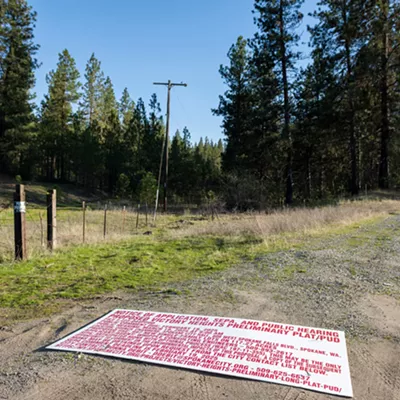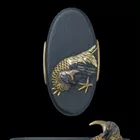Take Two
[
{
"name": "Broadstreet - Instory",
"component": "25846487",
"insertPoint": "4",
"requiredCountToDisplay": "4"
},{
"name": "Broadstreet - Empower Local",
"component": "27852456",
"insertPoint": "8",
"requiredCountToDisplay": "8"
},{
"name": "Broadstreet - Instory",
"component": "25846487",
"insertPoint": "12",
"requiredCountToDisplay": "12"
},{
"name": "Broadstreet - Instory - 728x90 / 970x250",
"component": "27852677",
"insertPoint": "18",
"requiredCountToDisplay": "18"
},{
"name": "Broadstreet - Instory",
"component": "25846487",
"insertPoint": "5th",
"startingPoint": "23",
"requiredCountToDisplay": "24",
"maxInsertions": 100
}
]
My Kid Could Paint That & r & & r & by LUKE BAUMGARTEN & r & & r & & lt;span class= "dropcap " & "H & lt;/span & elp me, Daddy," says 5-year-old Marla Olmstead. "Either help me or tell me it's finished." Bent over a canvas she's been painting on for a few hours (with brushes, spatulas and her fingers), the child is weary and unfocused. Her father, Mark, looks on, acting a little sheepish. This should seem normal: A little girl either wants help painting from her father or his assurance that she's done a good job. In the context of My Kid Could Paint That, though, the scene has weighty implications.
Marla, you see, has been selling her paintings since she was 4 -- and earning up to $20,000 apiece for them. The fact that she's looking for direction from her father seems to validate a previous report by 60 Minutes: Marla ain't the painter. Her dad is. The report had already set off a firestorm in the community and the nation that left the family alienated from even their best friends. The tape that finds Marla asking for help was to be the family's vindication. Despite what seems damning evidence against them, the family doggedly -- sometimes tearfully -- maintain their innocence. Marla can paint, they say. She just gets restless around cameras.
That leaves documentarian Amir Bar-Lev struggling with the film's focus. He shot this footage of Marla, wanting to help the family clear its name -- and his own doubts about the young girl's abilities.
Now that his observations seem to back up 60 Minutes, Bar-Lev's film, of necessity, takes on angles he's uncomfortable exploring. At its simplest, this is now a story about one family's fraud. At its most complex, it's about how a shift in editorial perspective and a well-placed child psychologist can change a story from heart-warming to sinister. Either way, it's gone from being a simple story about art and innocence and become perhaps the most tangled meta-issue mankind has: the problem of perception and deception.
Bar-Lev's camera turns, then, about halfway through, from the family to the media. Because he's a diligent filmmaker and a man of conscience, that means appearing before the camera himself. He films himself a few times, grappling with calling these warm-hearted people liars. He allows his subjects to interview him, rather than the other way around. "What did you want this to be?" asks Elizabeth Cohen, the columnist who wrote the very first story about Marla. "This was going to be a film about modern art," Bar-Lev replies, indicating how My Kid Could Paint That is about nothing of the sort.
Though it's clearly painful for him, Bar-Lev has stumbled upon a lens through which to view the media, public perception, and the way those things intermingle and act upon each other. It's never clear who's right, the Olmsteads or 60 Minutes. The family manages to record a DVD of Marla painting that seems to placate her collectors, but not Bar-Lev. He spends five minutes of his film juxtaposing Marla's controversial (crappier) works and her masterpieces, without comment, allowing viewers to decide for themselves what he can't make up his mind about. Then, in an act of penance for not being able to tell the story he wants to tell, he lets the New York Times' chief art critic, Michael Kimmelman, call him a liar onscreen.
Kimmelman's point -- and Bar-Lev's, by extension -- is that insofar as we take reality and give it the twist of our perspective, we're all liars. Abstract painters. Art critics. Overambitious parents. Hook-hungry journalists. Overeager filmmakers. Everyone's a liar, Bar-Lev suggests, except this innocent little girl who just likes to paint and who doesn't understand what all the fuss is about. (Playing one night only, Thursday, Nov. 29, at AMC; Rated PG-13)
Marla, you see, has been selling her paintings since she was 4 -- and earning up to $20,000 apiece for them. The fact that she's looking for direction from her father seems to validate a previous report by 60 Minutes: Marla ain't the painter. Her dad is. The report had already set off a firestorm in the community and the nation that left the family alienated from even their best friends. The tape that finds Marla asking for help was to be the family's vindication. Despite what seems damning evidence against them, the family doggedly -- sometimes tearfully -- maintain their innocence. Marla can paint, they say. She just gets restless around cameras.
That leaves documentarian Amir Bar-Lev struggling with the film's focus. He shot this footage of Marla, wanting to help the family clear its name -- and his own doubts about the young girl's abilities.
Now that his observations seem to back up 60 Minutes, Bar-Lev's film, of necessity, takes on angles he's uncomfortable exploring. At its simplest, this is now a story about one family's fraud. At its most complex, it's about how a shift in editorial perspective and a well-placed child psychologist can change a story from heart-warming to sinister. Either way, it's gone from being a simple story about art and innocence and become perhaps the most tangled meta-issue mankind has: the problem of perception and deception.
Bar-Lev's camera turns, then, about halfway through, from the family to the media. Because he's a diligent filmmaker and a man of conscience, that means appearing before the camera himself. He films himself a few times, grappling with calling these warm-hearted people liars. He allows his subjects to interview him, rather than the other way around. "What did you want this to be?" asks Elizabeth Cohen, the columnist who wrote the very first story about Marla. "This was going to be a film about modern art," Bar-Lev replies, indicating how My Kid Could Paint That is about nothing of the sort.
Though it's clearly painful for him, Bar-Lev has stumbled upon a lens through which to view the media, public perception, and the way those things intermingle and act upon each other. It's never clear who's right, the Olmsteads or 60 Minutes. The family manages to record a DVD of Marla painting that seems to placate her collectors, but not Bar-Lev. He spends five minutes of his film juxtaposing Marla's controversial (crappier) works and her masterpieces, without comment, allowing viewers to decide for themselves what he can't make up his mind about. Then, in an act of penance for not being able to tell the story he wants to tell, he lets the New York Times' chief art critic, Michael Kimmelman, call him a liar onscreen.
Kimmelman's point -- and Bar-Lev's, by extension -- is that insofar as we take reality and give it the twist of our perspective, we're all liars. Abstract painters. Art critics. Overambitious parents. Hook-hungry journalists. Overeager filmmakers. Everyone's a liar, Bar-Lev suggests, except this innocent little girl who just likes to paint and who doesn't understand what all the fuss is about. (Playing one night only, Thursday, Nov. 29, at AMC; Rated PG-13)
















